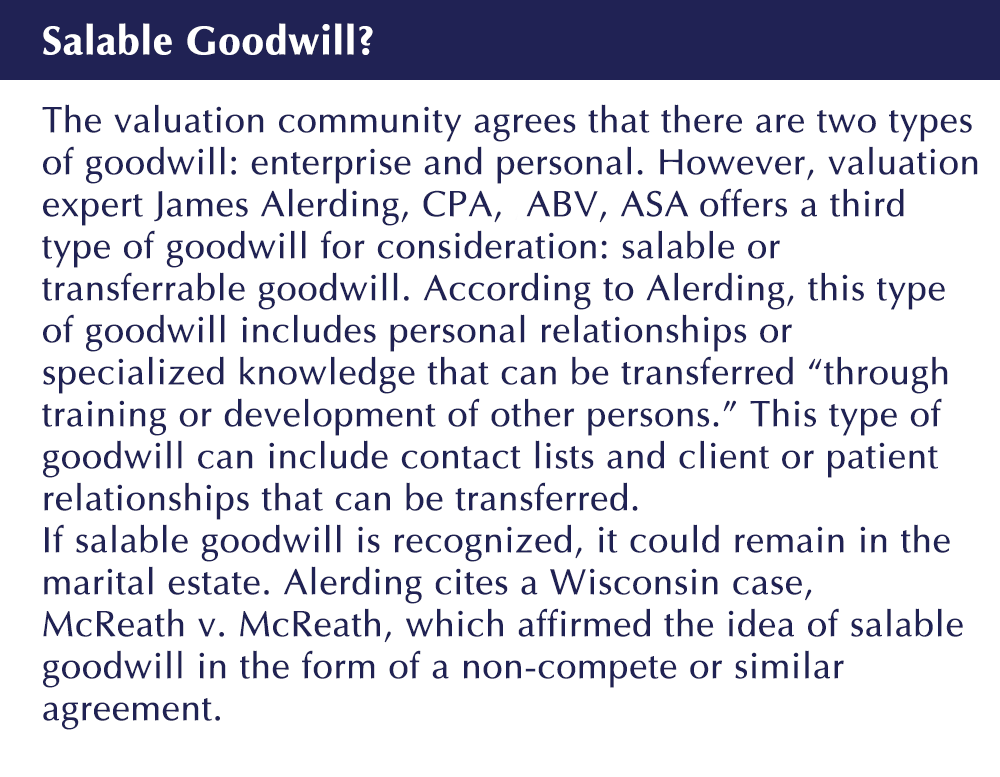One of the most fiercely debated elements in a divorce is goodwill, an intangible asset that provides a business with a competitive advantage in the marketplace. Goodwill can include a company’s name, brand identity, client relationships and other hard-to-define elements that are part of the business.
In many states, goodwill is considered property and is thus subject to equitable division of assets in a divorce. When assessing the value of a business to be divided, who owns the goodwill — the individual or the company — can have significant consequences.
What’s the Difference?
Personal goodwill is goodwill that a business owner owns separately from the company. For example, a business owner may have personal goodwill related to his or her specific skills, reputation, personality, judgment or management style.
Personal goodwill is often significant in entrepreneurial businesses or professional service firms, with revenue generation largely dependent on the owner’s personal reputation or relationships with customers.
Conversely, enterprise goodwill is associated with and owned by the business. Enterprise goodwill is often significant in larger companies that are not dependent on personal services or relationships.
In a divorce, many states treat enterprise and personal goodwill separately. The thinking is that enterprise goodwill stays with the business and is therefore part of the marital assets to be divided, while personal goodwill stays with the spouse who creates it and is therefore not part of the marital property to be divided.
How to Value
There are several accepted methods for valuing total goodwill, but most don’t distinguish between enterprise and personal goodwill.
One method, the Multiattribute Utility Model (MUM), provides a way to assess personal goodwill using eight equally-weighted attributes for each type of goodwill. Each of the attributes — from personal reputation to location — is measured in terms of strength and importance to the specific valuation, and a total is computed for both types of goodwill. The analysts then adjust the results based on each attribute’s contribution to the total.
Used widely in disciplines such as economics and science, MUM has gained traction in the valuation arena because it provides a reasonable and supportable framework for goodwill assessment and allocation.
Valuing goodwill is not straightforward. Indeed, it is known as one of the more subjective areas of valuation. Great care must be taken to arrive at a defensible value.
For more information about valuing goodwill, please fill out the form below and we’ll contact you.

Contact Us
Blog
Nonprofit Insights

